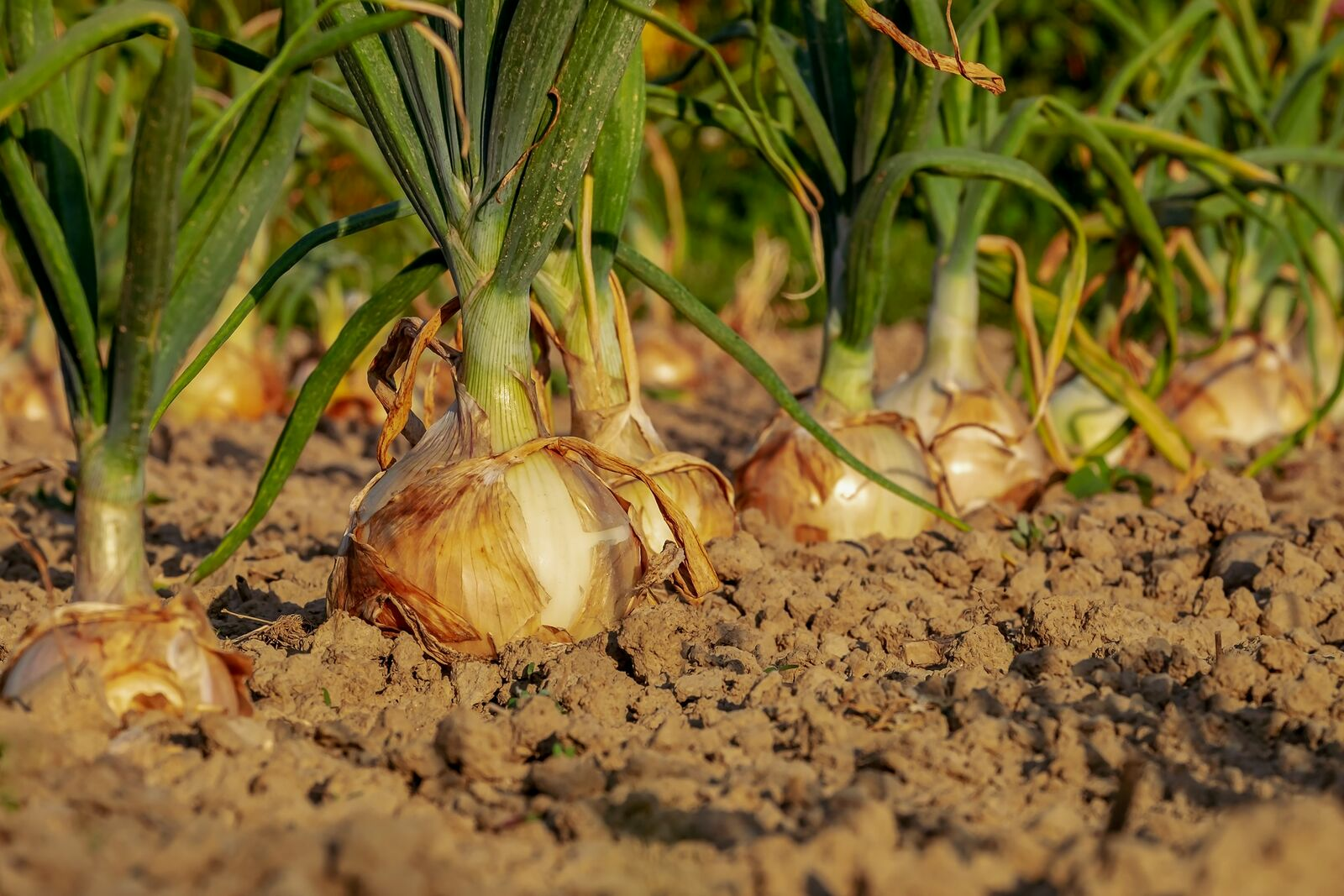Growing onions
Sowing or planting onions?
Onions can be sown directly as seeds in the bed or planted as pre-grown onion sets in the bed. With onion sets, you can start harvesting onions earlier (approx. 4 weeks earlier) and you have less effort. However, the selection of varieties is significantly smaller and they are more expensive than seeds. Sowing often ensures healthier growth and longer storage life.
Sowing & preplanting onions
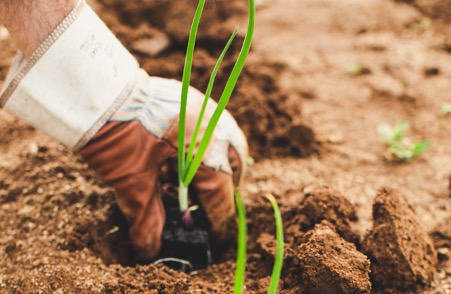
- Summer bulbs: outdoors from mid-March to early April - Winter bulbs: mid-August to September
- Sowing depth: approx. 1 - 2 cm/0.4 - 0.8 in, germination temperature: 5 - 20 °C/41 - 68 ° F
- Pre-grow indoors in seed trays or pots from January
- Plant out as soon as the 3rd - 4th leaf is visible and no more heavy frost is expected
Planting onion sets
Onion sets are small, pre-grown onions that can be planted directly in the bed. Usually in March/April or September/October. The sowing depth is approx. 2 - 5 cm/0.8 - 2 in. The root side of the bulb should point downwards. Press the bulbs down lightly and cover them with a thin layer of soil. The tip should still be slightly sticking out of the soil.
Planting onions - location & soil
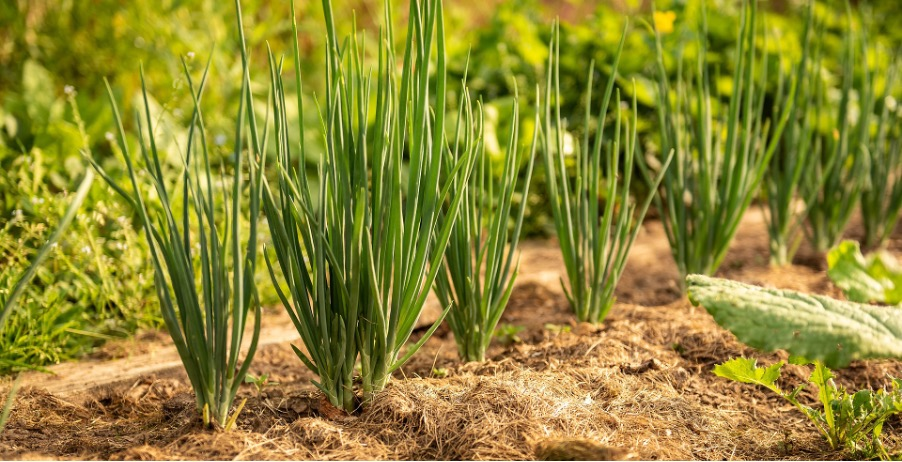
Prefer a sunny location, preferably open to the wind. The soil should be loose and well-drained to avoid waterlogging. You should not plant the onions in a bed where leek plants have grown in the previous 1 - 2 years.
Planting distance:
- Edible onions: 10 - 15 cm/3.9 - 5.9 in in a row, 20 - 30 cm/7.9 - 11.8 in between rows
- Leek onions: 3 cm/1.2 in in a row, 15 cm/5.9 in between rows
Fertilize & care for onions
Before planting in the fall, you can mix compost or well-rotted manure into the soil. This is particularly useful for sandy soils. During the growth of your bulbs, you should avoid this, as an excess of nitrogen leads to reduced bulb formation. Even moisture is ideal. You should regularly remove weeds from around your plants.
Diseases & pests
Onions are particularly affected by mildew, onion fly, onion neck rot and thrips. To reduce infestation, crop rotation and the correct planting distance should be observed. With good planting partners, you can keep pests and diseases at bay. To protect against the onion fly, it may be worth covering the plants with crop protection nets.
Propagating onions
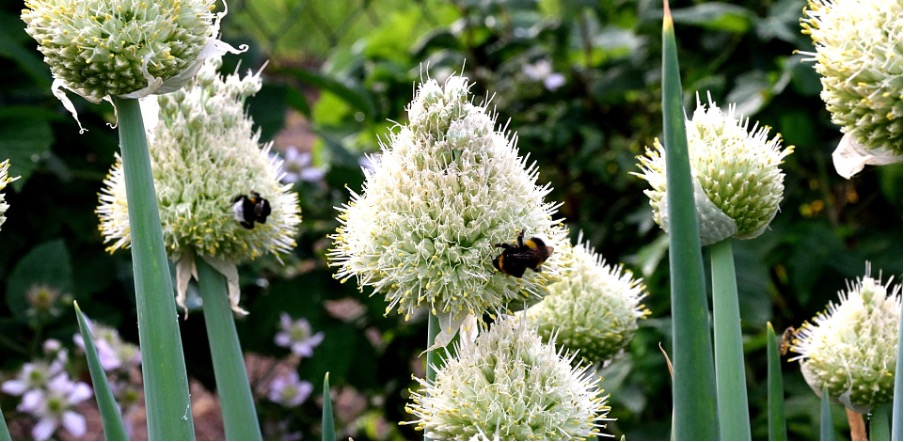
Onions are propagated using seeds or onion sets. With perennial onion varieties, you can also use bulbs for propagation. In the 2nd year of cultivation, the onion plant develops a central, upright flower stalk that ends in a spherical, multi-flowered inflorescence. After fertilization, seed capsules are formed which contain the small, black onion seeds.
Harvesting & storing onions
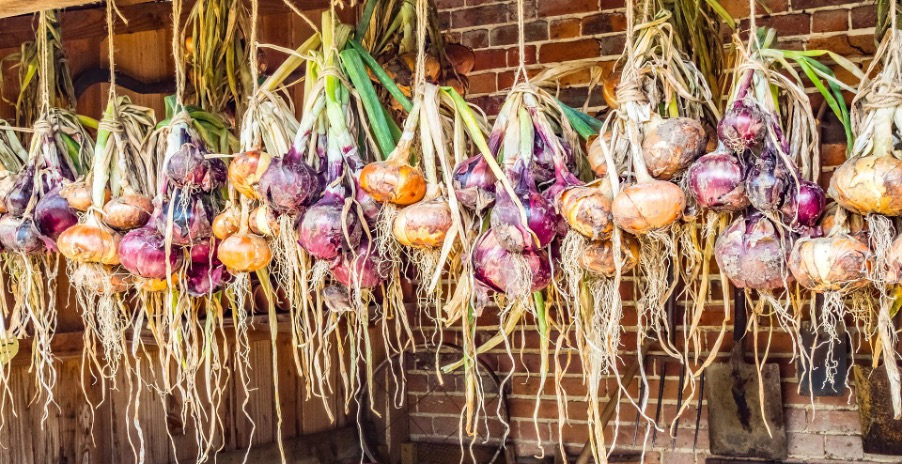
The onions are harvested as soon as the foliage has wilted and turned yellow. Then you should stop watering them. Carefully pull the bulbs out of the ground and leave them to dry in an airy, shady place for a few days. You can then store them in a cool, dark and dry room. To prevent mold growth, do not place the onions in direct contact with the soil and check them regularly.
